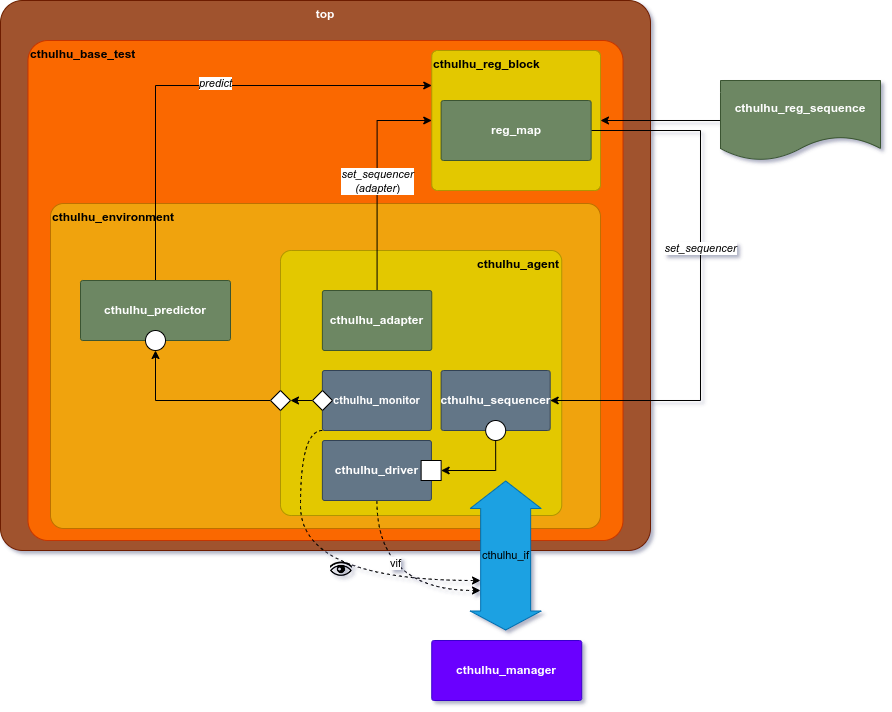The Test
Hands-on to implement a simple UVM ambient with RAL
If you return to any page that contains the UVM diagram, you will see that the register block is inside the test. So, the first thing that we need to know is how to insert this component at the test file. There are three things we must do:
Register block instantiation;
Register block build;
Connect the register block map to the predictor map;
Configure the sequencer and the adapter of the register block map;
Configure the base address of the register block map (the offsets will be computed considering this value)
These five steps are implemented below (The complete Base test code, and the cthulhu_reg_test is at Source Code).
class cthulhu_base_test extends uvm_test;
`uvm_component_utils(cthulhu_base_test)
cthulhu_environment env;
cthulhu_reg_block regmodel; // 1.
function new(string name = "cthulhu_base_test",uvm_component parent=null);
super.new(name,parent);
endfunction : new
virtual function void build_phase(uvm_phase phase);
super.build_phase(phase);
regmodel = cthulhu_reg_block::type_id::create("regmodel", this); // 2.1
regmodel.build(); // 2.2
env = cthulhu_environment::type_id::create("env", this);
endfunction : build_phase
virtual function void connect_phase(uvm_phase phase);
super.connect_phase(phase);
env.cthulhu_pred.map = regmodel.reg_map; // 3.
regmodel.reg_map.set_sequencer(.sequencer(env.cthulhu_agnt.sequencer), .adapter(env.cthulhu_agnt.m_adapter)); // 4.
regmodel.default_map.set_base_addr('h100); // 5.
endfunction : connect_phase
...
endclass : cthulhu_base_testThe top file doesn't contain any RAL component, so you can see it at YOU KNOW WHERE YOU CAN FIND SOURCE CODES. Our UVM diagram is finnaly complete:
